All rook endgames are drawn.Ten moves against the computer from the first problem in Imagination in Chess led me to this position.
Siegbert Tarrasch*
Black to move
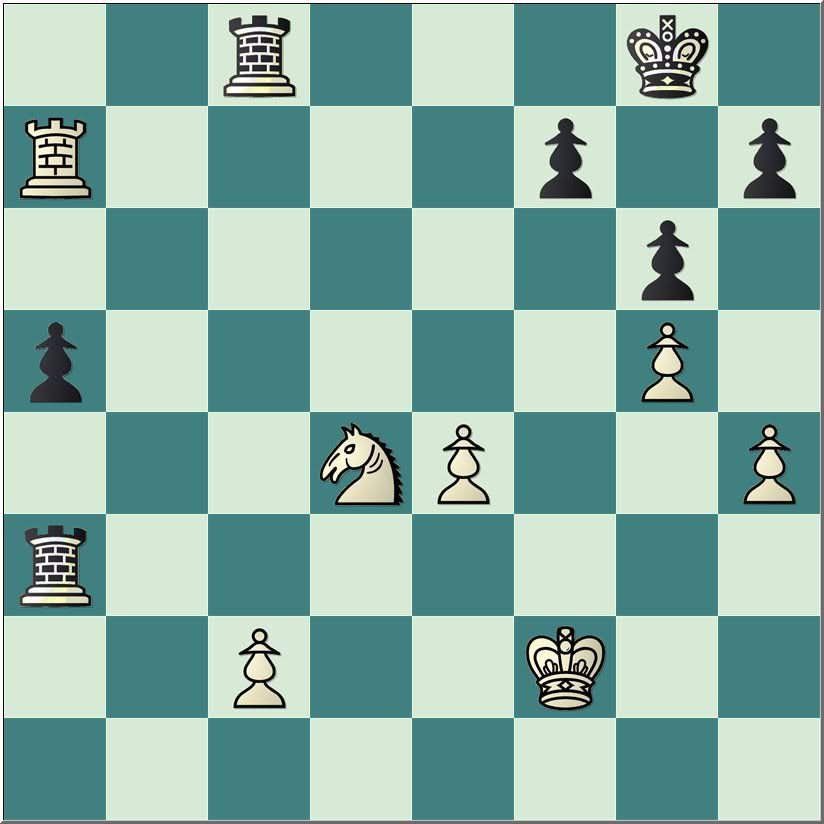
Hiarcs 10 - Stripes,J
Progressive Thinking, 26.11.2008
I played 11... Ra4 with the idea of attacking the knight and passed c-pawn.
Play continued 12.Rd7 Rxd4 the exchange sacrifice
13.Rxd4 Rxc2+ 14.Ke3 Ra2
White to move
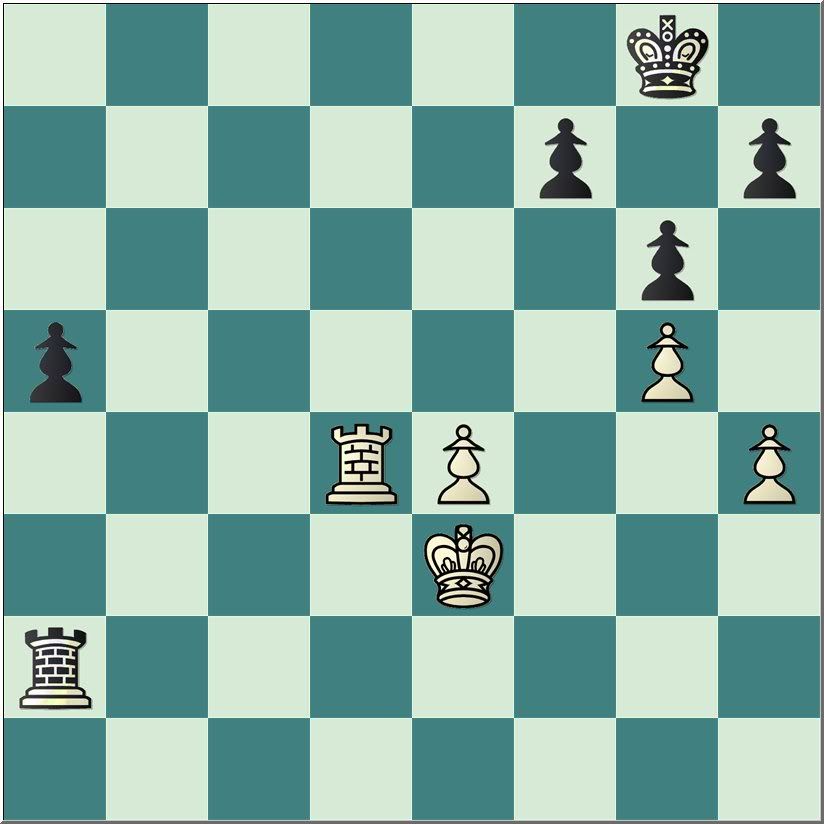
6k1/5p1p/6p1/p5P1/3RP2P/4K3/r7/8 w
I propose that this position might be useful for training against the computer as a means of developing endgame skill. Black has an outside passed pawn and has better pawns on the other side of the board. On the other hand, White has some play. White will quickly bring the rook behind Black's passed pawn via d8 or d7, and the e-pawn might threaten some disruption. My first effort was smooth and successful, but I tried again several more times after reading the comments in reply to my assertion that it was easy. I tried the position against several different engines--Hiarcs 10 and 12, Fritz 9--with modest success. I did not succeed in winning every effort.
Black has a technical win, but my assertion that is is easy overreaches a bit.
Mixed Results
The "Easy" Win
15.Rd8+ Kg7 16.Rd7 a4 17.e5
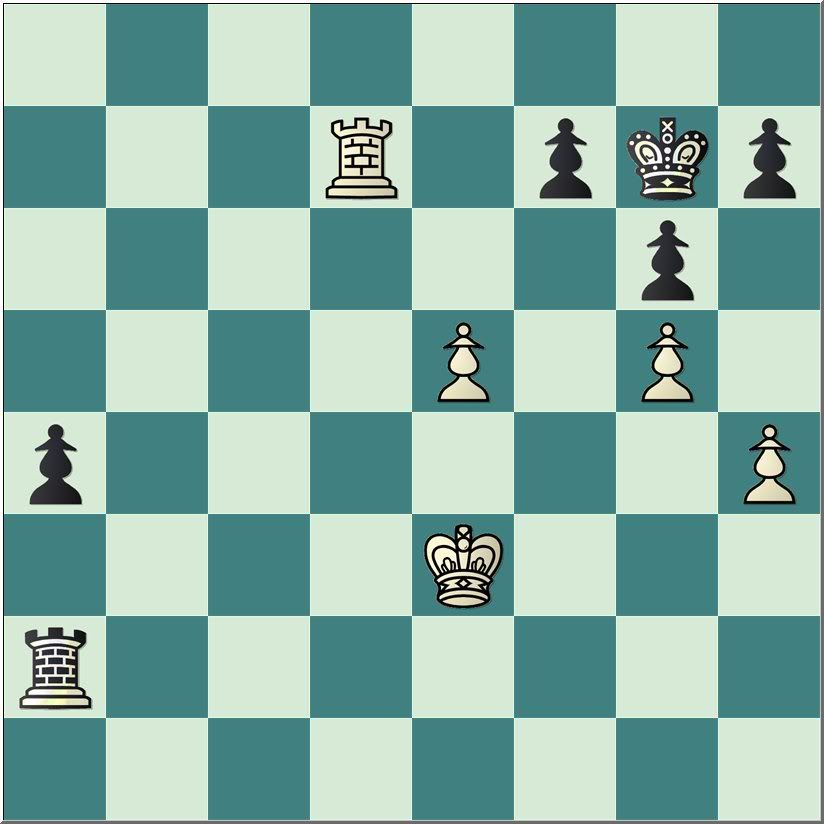
17...Kf8 18.Ra7 a3 19.Kd4 Ra1 20.Kc4 a2 21.Kb3
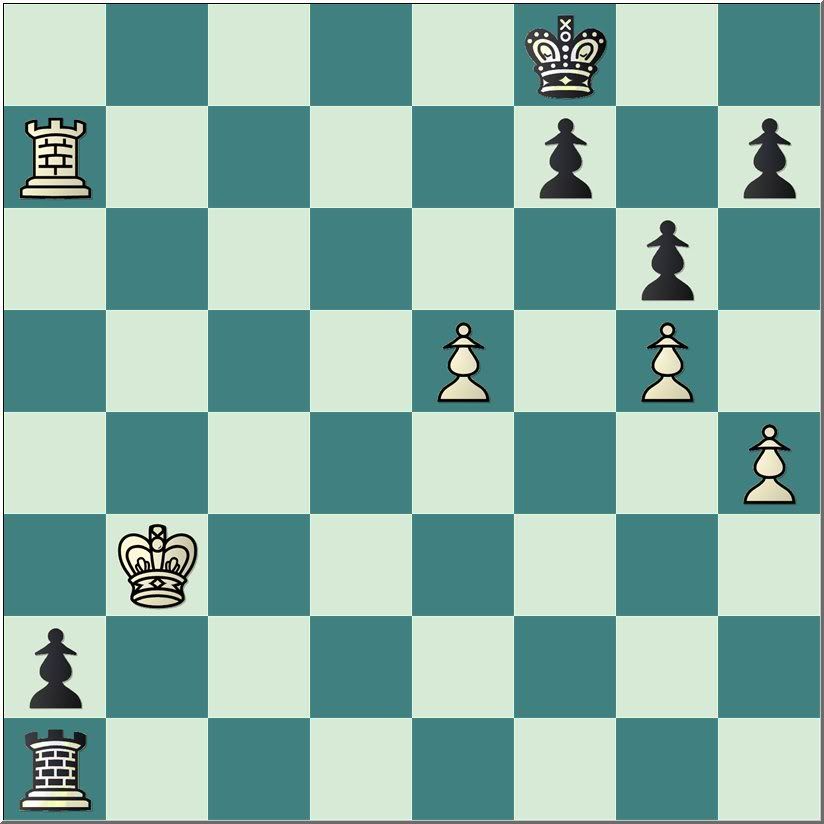
21...Rh1 22.Rxa2 Rxh4 23.Ra5 Ke7 24.Kc3 Ke6 25.Kd3 Rg4 26.Ra6+ Kxe5 27.Ra7 Rxg5 28.Rxf7 h5 29.Ke2 Rf5 30.Re7+
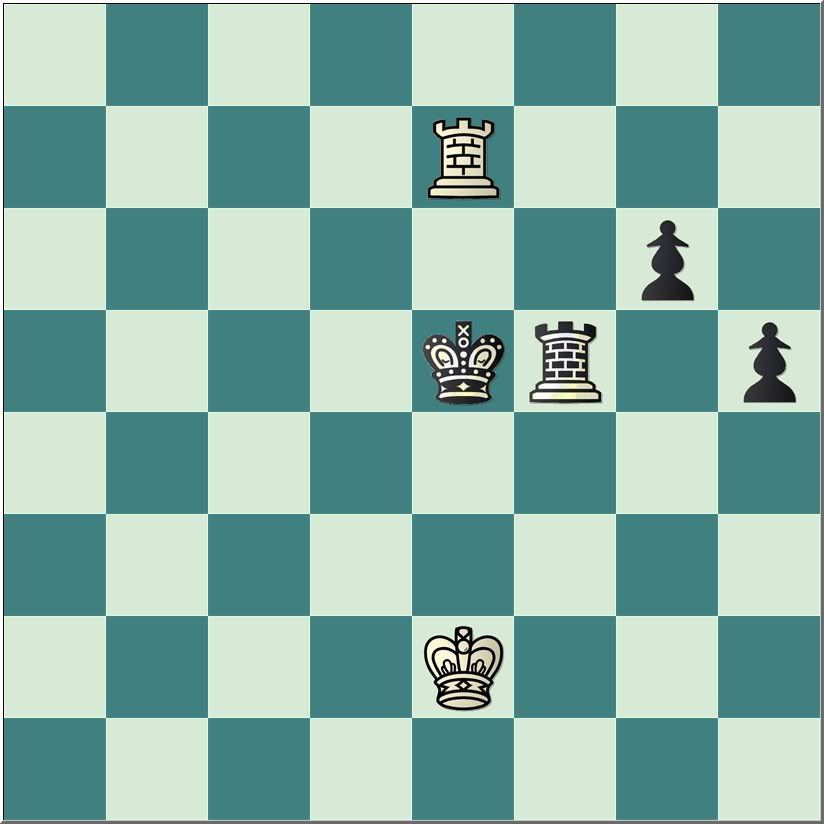
30...Kf4
30...Kf6 seems worth considering with the idea of keeping the White king from in front of the pawns
31.Kf2 Kg4+ 32.Kg1 h4 33.Re4+ Rf4 34.Re6 g5 35.Rg6 Rb4 36.Ra6 h3 37.Kh2 Rb2+ 38.Kh1 Kh4
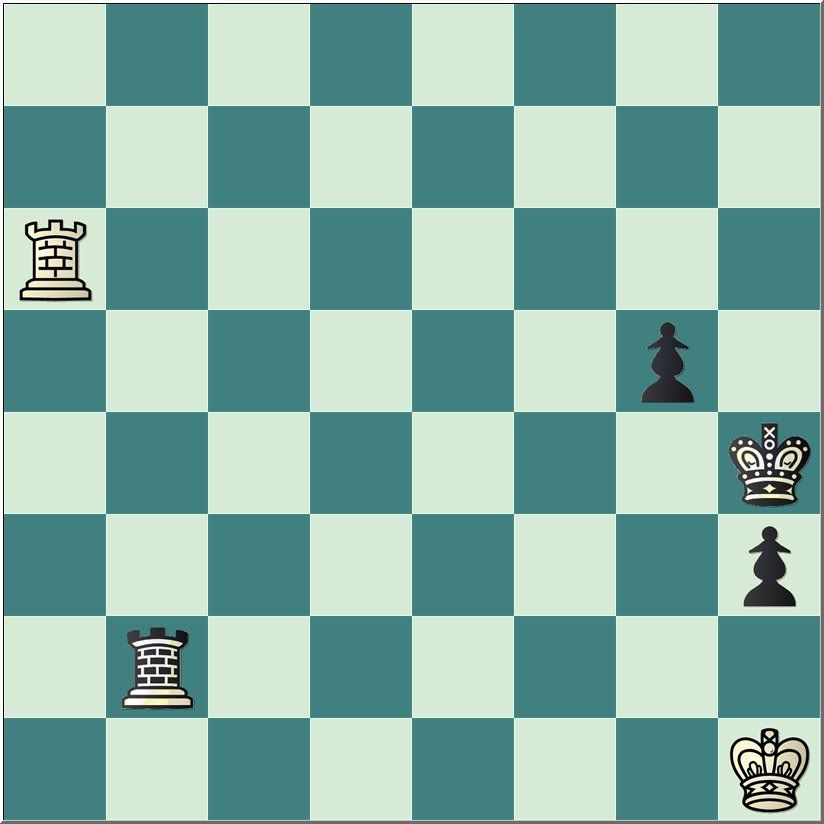
If not for the h-pawn, White could play Ra3 and draw (Philidor position).
39.Ra4+ g4 40.Kg1 Rg2+ 41.Kh1 Rg3 42.Kh2 Rb3 43.Kg1 Kg3 44.Ra1 Kf3 45.Rf1+ Ke2 46.Rf2+ Ke3 47.Rf8 Rb1+ 48.Kh2 Rb2+ 49.Kg1 g3 50.Ra8
This move seems inexplicable. But sometimes when the computer sees that checkmate is forced, it will make a stupid move as if in despair.
50.Re8+ Kd4 51.Re1 Rf2 52.Kh1 Kd3 53.Rb1 Ke2 54.Kg1 Kf3 55.Rb3+ Kg4 56.Rb4+ Rf4 57.Rb2 h2+ 58.Kg2 Rf2+ 59.Rxf2 gxf2 60.Kxf2 h1Q 61.Ke2 Qd5 62.Ke3 Kg3 63.Ke2 Qd4 64.Ke1 Kf3 65.Kf1 Qa1#
50...Rb1# 0–1
An Easier Win
Hiarcs 12 - Stripes,J
Progressive Thinking, 27.11.2008
15.Rd8+ Kg7 16.e5 a4 17.Ra8 a3 18.Ra7 Kf8 19.Kd4 Ra1 20.Kd3 a2 21.Kc2
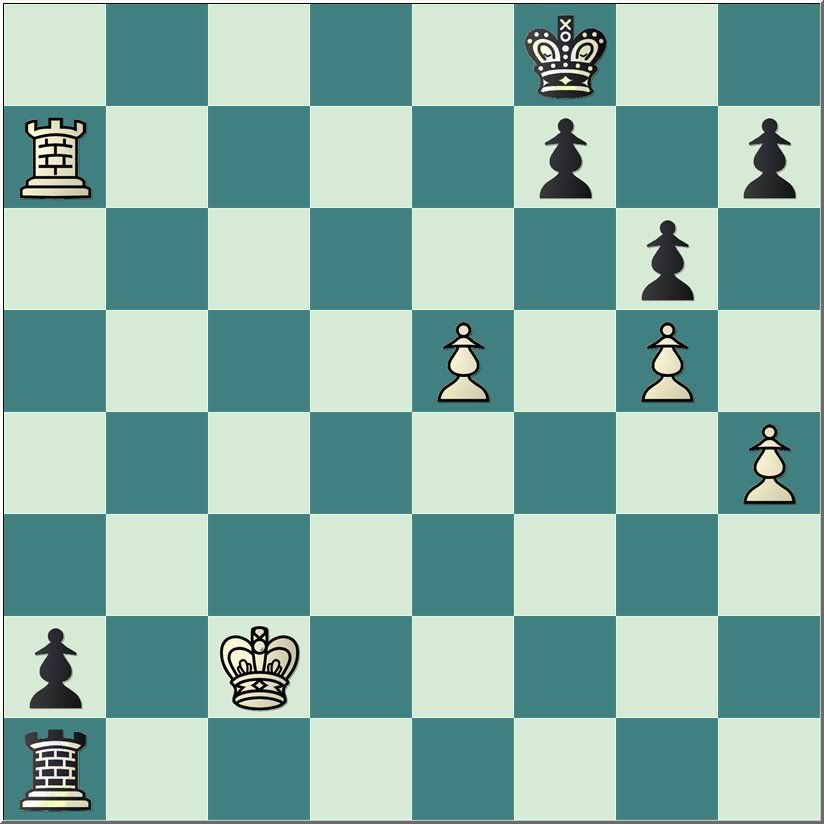
21...Rh1 22.Kb2 a1Q+ 23.Rxa1 Rxa1 24.Kxa1 Ke7 0–1
Often the key to winning a rook and pawn endgame is conversion to an elementary king and pawn endgame.
A Variation that Failed
Hiarcs 12 - Stripes,J
Progressive Thinking, 27.11.2008
15.Rd8+ Kg7 16.e5
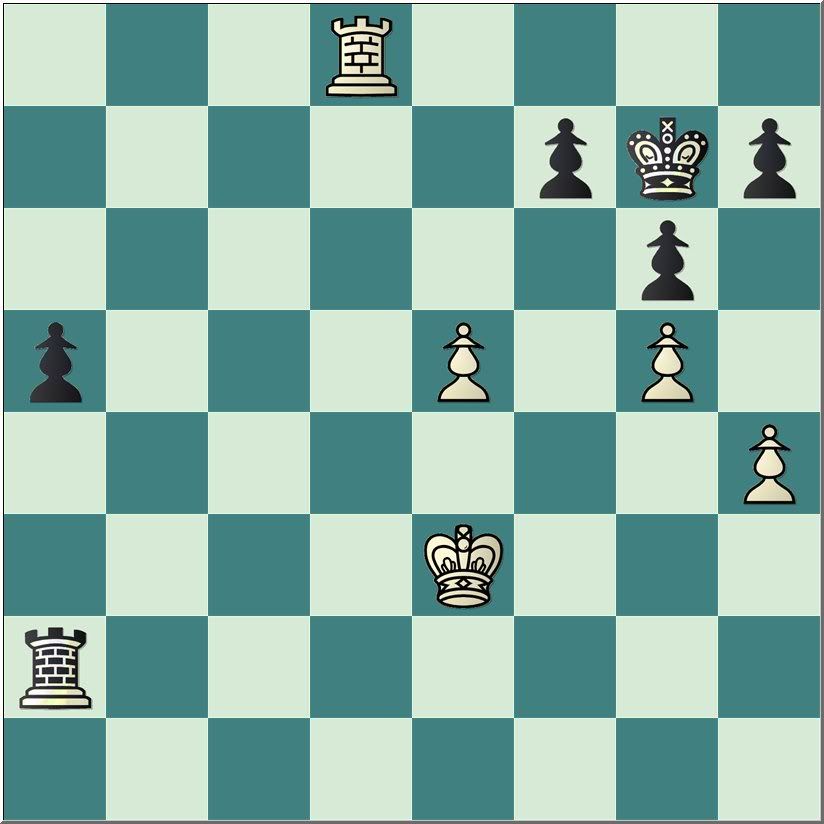
16...Ra1?!
16...a4 is better. Black's a-pawn is the key to winning.
17.Rd7 Re1+
Black still wins with 17...Kf8
18.Kf4 Kf8 19.Ra7 Ra1 20.e6 Rf1+ 21.Kg4 fxe6 22.Rxa5 Rf5 23.Ra7 Rf7 24.Ra8+ Kg7 25.Re8 ½–½
Learning from Errors
My first effort against Fritz 9 encountered a different defensive strategy, and I failed.
Fritz 9 - Stripes,J
Progressive Thinking, 27.11.2008
14.Rd8+ I cannot explain why this move number is now 14 instead of fifteen Kg7 15.Ra8 a4 16.Ra7 a3 17.e5 Kf8 18.Kf4!
Fritz opts not to chase the a-pawn, preventing its promotion by another method.
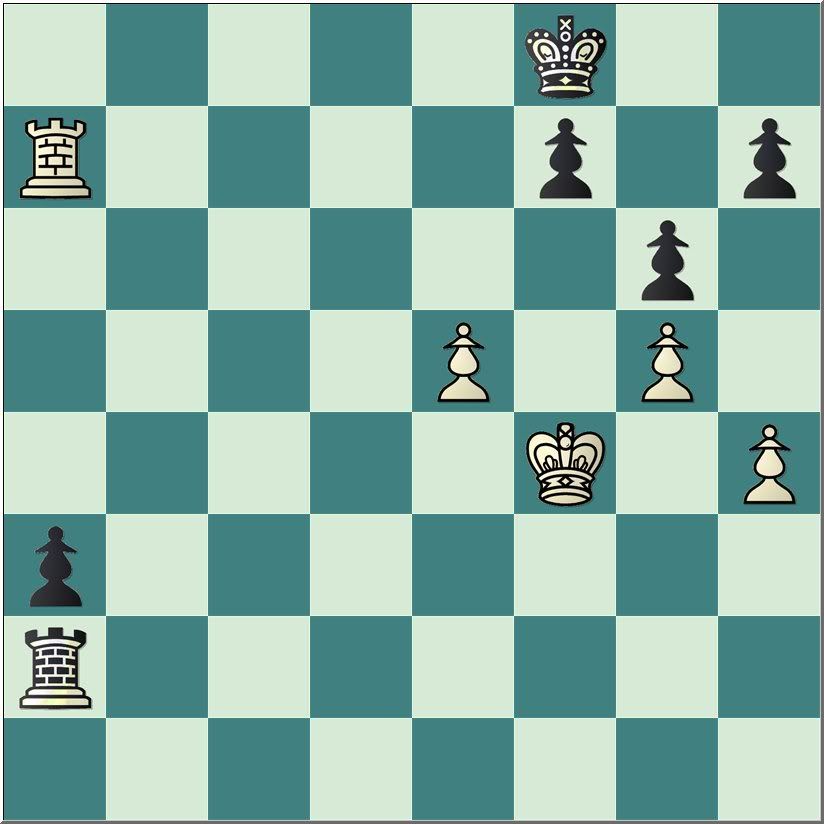
18...Ra1 19.Kg3 a2 20.Kg2 Ke8 21.Kh2 Kd8 22.Ra8+ Ke7 23.Ra6 Kd7 24.Kg2 Kc7!
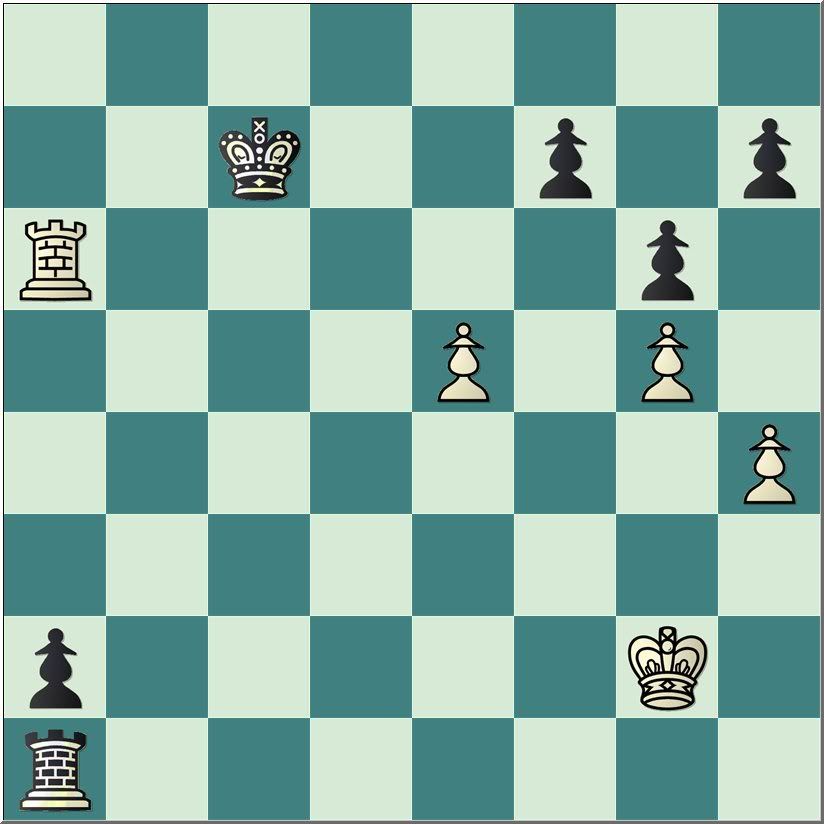
It is not necessary to protect the kingside pawns so long as the a-pawn is menacing.
25.Ra8 Kb7 26.Ra5 Kb6 27.Ra4 Kc5 28.Ra8 Kd5 29.Ra5+ Kc4 30.Ra7 Kb3 31.Rb7+ Kc3 32.Ra7 Kd4 33.Ra5 Ke4 34.Kh2 Kf4 35.Kg2 Kg4 36.Ra4+ Kh5 37.Kh2

37...Re1 38.Rxa2 Kxh4 39.Rf2 Kxg5 40.Rxf7 h5 41.Kg2 Rxe5 42.Rg7 Ra5 43.Kh3 Ra3+ 44.Kg2 Kf5
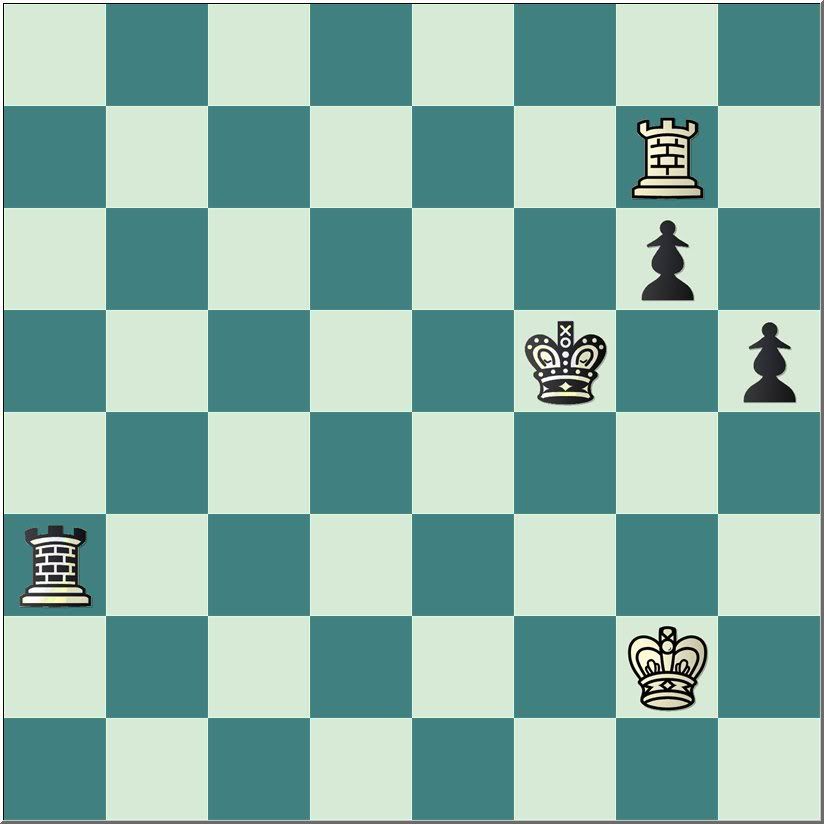
I've already demonstrated that I could win this sort of position. But I later got mixed up.
45.Rd7 Ra4 46.Kf3 h4 47.Rd5+ Ke6 48.Rb5 Kf6 49.Rb6+ Kg5 50.Rb5+ Kh6 51.Rb8 g5 52.Rh8+ Kg7 53.Rb8 Rf4+ 54.Kg2 Kg6 55.Ra8 Kf5 56.Kh3 Rf3+ 57.Kh2 Kg4 58.Ra4+ Rf4 59.Ra3 Rb4 60.Rc3 Kf4 61.Rc2 g4 62.Rf2+ Kg5 63.Ra2 h3 64.Kg3 Rb3+ 65.Kh2 Kh4 66.Ra4
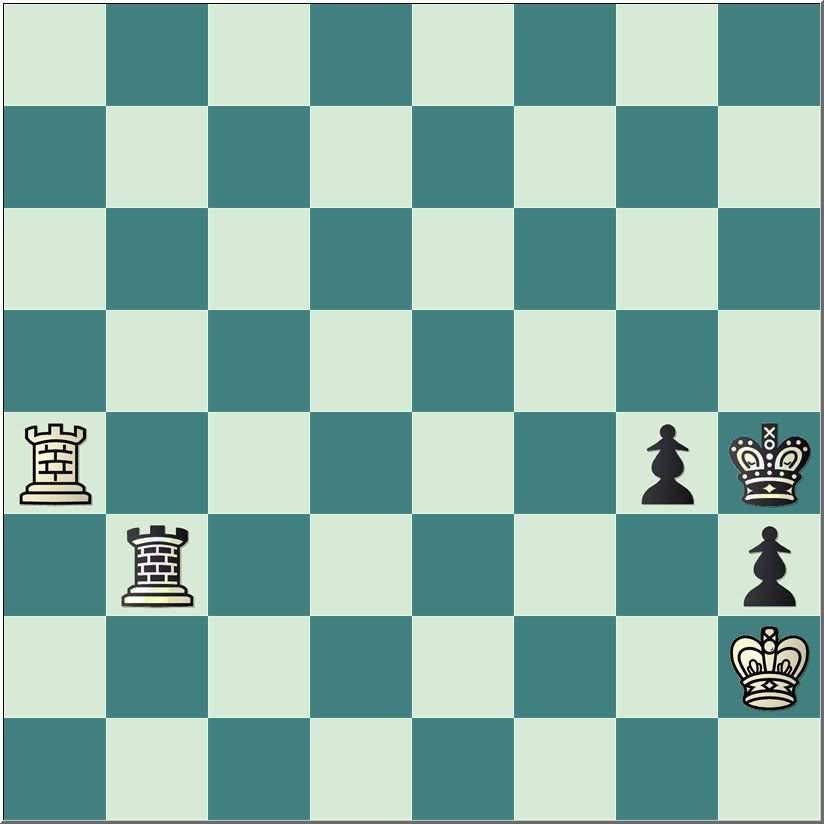
66...Rb2+ 67.Kg1 Rb7 68.Kh2 Rf7 69.Rd4 Rf2+ 70.Kg1 Rf3 71.Kh2 Ra3 72.Rc4 Ra2+ 73.Kh1 Kg5 74.Rc5+ Kf4 75.Rc4+ Kf3 76.Rc3+ Kf2 77.Kh2 Ke1+ 78.Kg1 Rd2 79.Rc4 g3 80.Rc3 h2+ 81.Kh1 Kf2 82.Rxg3 Rd1+ 83.Kxh2 Rh1+ 84.Kxh1 Kxg3 ½–½
Trying again from the diagram after 66.Ra4:
Fritz 9 - Stripes,J
Progressive Thinking, 27.11.2008
66... Rb2+ 67.Kg1 Re2!
Improvement!
68.Ra6 g3 69.Ra4+ Kh5 70.Ra5+ Kg4 71.Ra4+ Kf3 72.Ra3+ Re3 73.Ra1
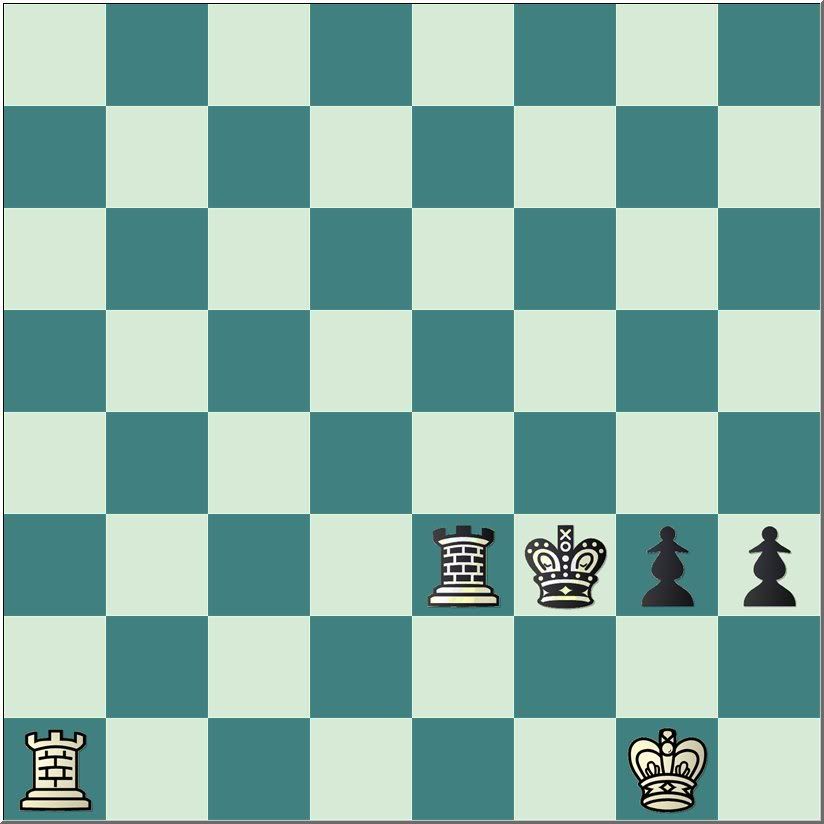
73...h2+ 74.Kh1 Kg4 75.Ra4+ Kh3 0–1
It's a long endgame from my training position, and perhaps not so easy. But, neither is such technique horribly complicated. With a bit of practice, these rook and pawn endgames can be won consistently.
*It is not entirely clear that Tarrasch ever made such a statement. An unsourced comment in Frank Brady, Bobby Fischer: Profile of a Prodigy (1973) states that Tigran Petrosian took comfort recalling this adage, attributed to Saviely Tartakower, while defending a rook endgame against Bobby Fischer (166). Often the statement as attribed to Tartakower reads slightly differently: "all rook and pawn endgames are drawn." Others attribute the quote to Tarrasch, who did write something similar: "In rook endings the weaker side generally has some chances of a draw right up to the very end" (Tarrasch, The Game of Chess [1935], 81, translated from Das Endspiel [1931]). See Edward Winter, Chess Notes 5822.














Takes alott of moves to win but like you showed it's a won position for black. Still am not 100% sure i would play the exchange sacriface in the game. Call me chicken, but the position is still to unclear for me to dive head over head in that exchange sacriface.
ReplyDeleteI think you're right. I thought at the time I played it that the presence of the White knight made things murky, but the rook and pawn endgame seems even more so. Moreover, it seems that each time I play it against the computer, the computer finds something new to make the win harder. At this point I've drawn more than I've won from the starting position after the sacrifice.
ReplyDeleteAnyway, looks like a very good rook endgame exercise. I wish I had patience to do that.
ReplyDeleteI agree with your training.
ReplyDeletehow to practice, which according to my very good.
happy to know you from chesslovers.
Thank you for your article.